Human Colour Vision Explained, the Full Story

Here is the full story of human colour vision in a complete article that we‘ve tried to keep as understandable as possible. It a long read, that is a bit shocking, especially when you realise just how little of what we see actually reflects what is actually out there!
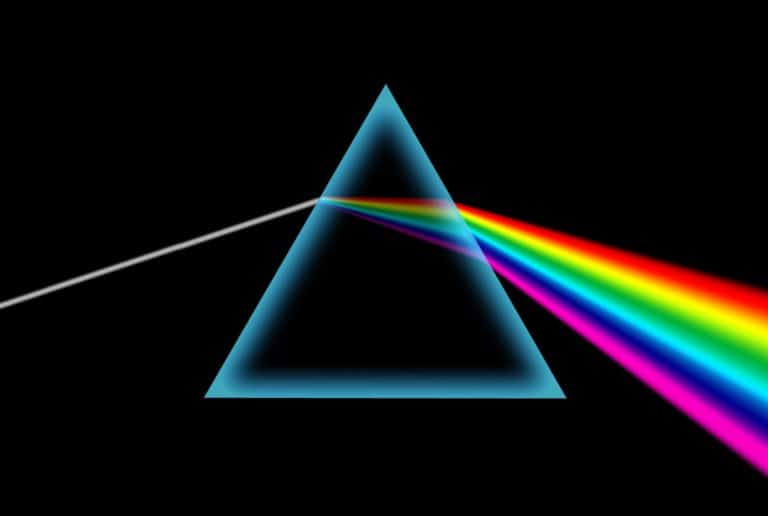
Light and Human Colour Vision
Sunlight
White light from the Sun is fundamental to human colour vision, but it can be split into all the colours of the rainbow. The light waves are refracted (bent) as they enter and leave the prism. The shorter the wavelength of the light the more it is refracted, so the colours are split – technically its called dispersion. Our eyes can see around seven distinct colours in the light from the prism.
Taking one colour and putting that through another prism still gives a single colour, the prism is not able to split the light any further. But we now know that light can be split into its individual wavelengths or frequencies using equipment such as diffraction gratings or spectrographs.
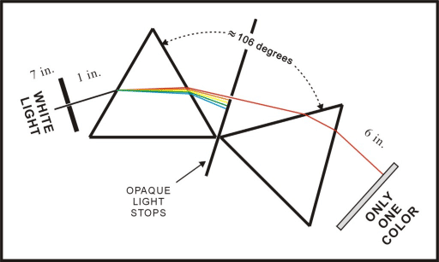
Light and Vision Primary Colours
The primary colours of light for human vision are Red, Green, and Blue, mixing all three makes white light.
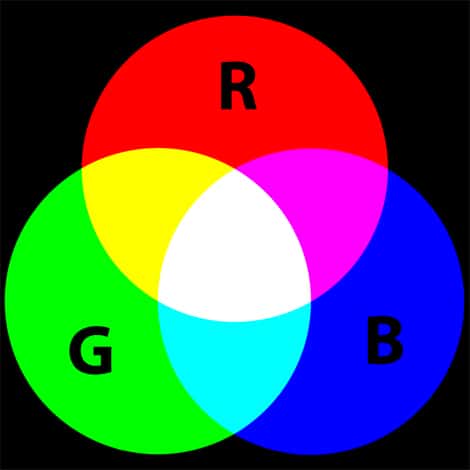
Additive colour mixing illustrated above
Light visible to the human eye
We see only a small part of the full electromagnetic spectrum. We see is less than a 10 trillionth of what’s out there! Some snakes can sense some infrared, and honeybees include ultraviolet in their view of the world, giving them an advantage when viewing flowers etc.
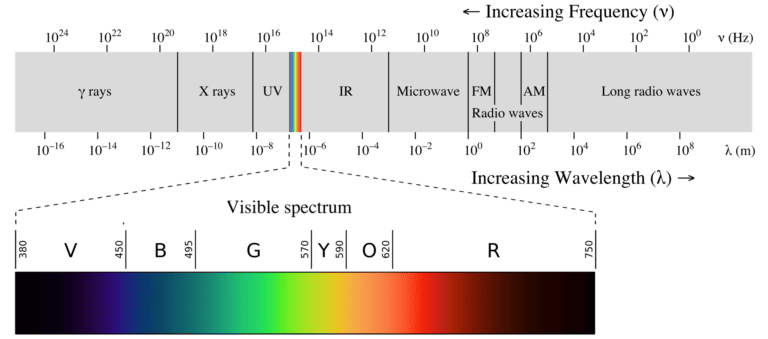
Why Do We See Colour At All?
White light strikes an object and the colour we see is due to the light that is reflected into our eyes. Objects absorb some of the colours from the light falling on them and we see the light that is not absorbed.
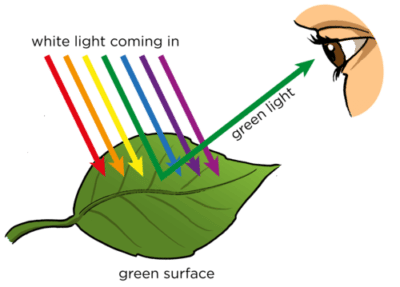
A green object such as a leaf absorbs all colours from the light except the green light. A white object absorbs very little light and reflects most of it into our eyes. Black object absorb most of the light falling on them and so they are often hard to see in high detail, unless the illumination is very good.
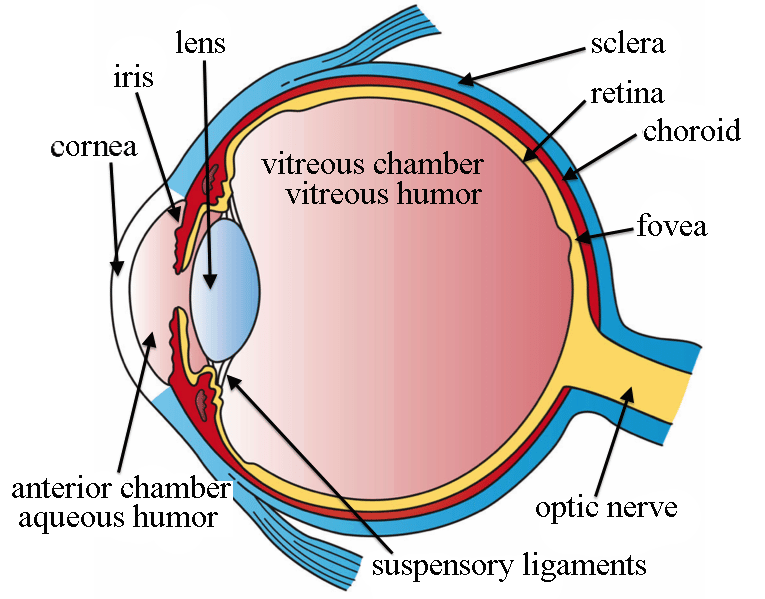
How Do Human Eyes Work
The retina at the back of the eye is a complex part of the eye, and its job is to turn light into signals about the images on its surface that the brain can understand. Only the retina is light sensitive, and it is roughly the area of a 10p coin, and is packed with photosensitive cells. Because the lens of the eye is curved, it bends the light, creating an upside-down image on the retina.
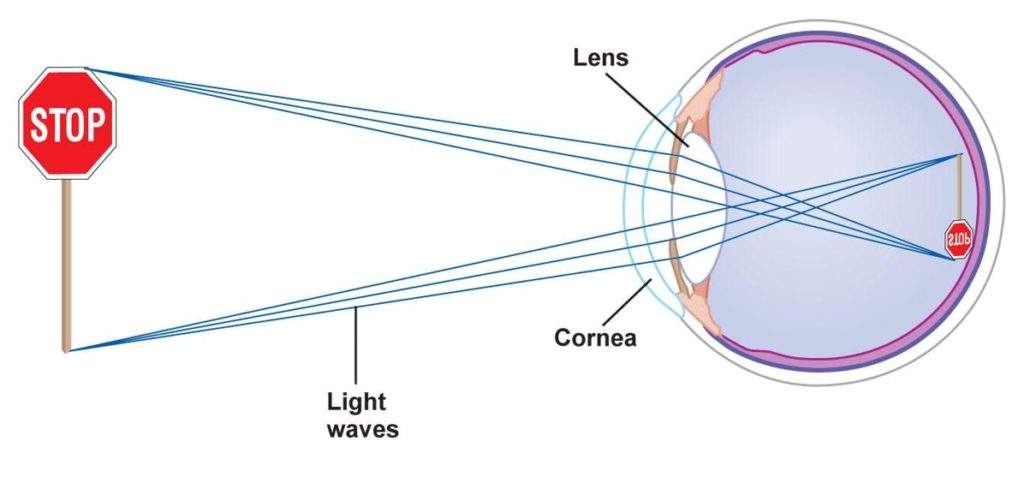
The brain turns the images the right way up and we never know anything is strange. Our brain also creates a single image from our two eyes!
Two image from our eyes, set some distance apart, gives us binocular vision, so we get depth perception and are able to see the world in three dimensions.
Our Eyes Are Very Sensitive To Low Levels Of Light
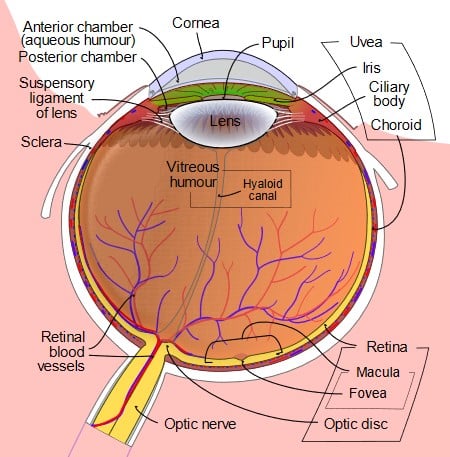
Rod cells in the retina, shown below, make our eyes very sensitive to levels of light and they contain a substance called rhodopsin, also known as visual purple. However, it’s cone cells that give us our perception of colours.
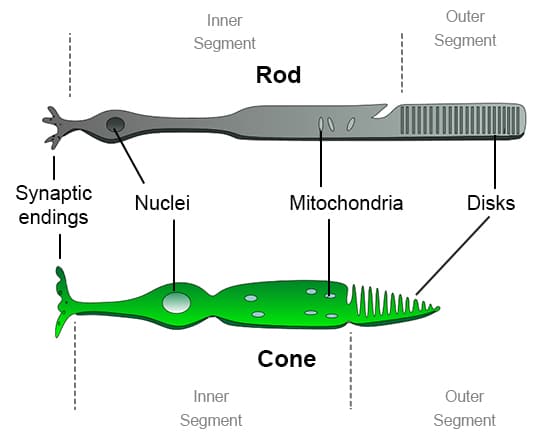
We see colours via three types of cone cells sensitive to red, green, and blue light (they contain three different light sensitive photopsins, types I, II and III). Some “tetrachromats” have an extra 4th cone that peaks somewhere between red and green, allowing them to see more hues – it is thought in about 3% of women. In darkness, the cone cells do not function at all. So, the colours we see are a product of the light source illuminating the object, plus the eye and brain’s combined response to the light reflected from the object. Colour vision is a psychophysical property and depends heavily on interpretation by the brain. Most people can distinguish over 10 million individual colours.
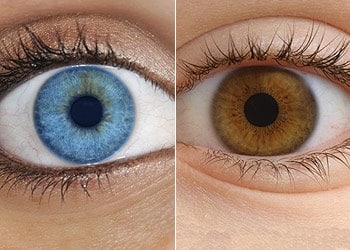
Eyes, a New Receptor Cell Found in Human Colour Vision
Scientists studying the response of specific mice with retinal diseases to a light/dark cycle. The mice were blind – they had no rods and cones cells left, but their body clocks were working okay. This lead to the discovery of a previously unknown light receptor cell in the eye: containing a protein called melanopsin. Found in these intrinsically photosensitive retinal ganglion cells ipRGCs which are a type of nerve cell containing melanopsin.
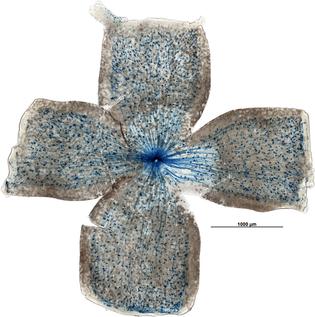
The ipRGC cells are particularly sensitive to blue light and this affects the suprachiasmatic nucleus (SCN), also known as the central “body clock“ in the brain. The response from these ipRGCs, and their effect on the SCN, governs everything from pupil size, to circadian rhythm, levels of arousal and attention (The protein Melanopsin is coded for by Opn4 genes, found on chromosome ten). For good sleep it is recommended that we stay away from TV’s and other screens for a few hours before we plan to sleep. This is based on the fact that most display screens emit a high proportion of blue light and so this can affect our body clocks and hence disturb proper sleep patterns.
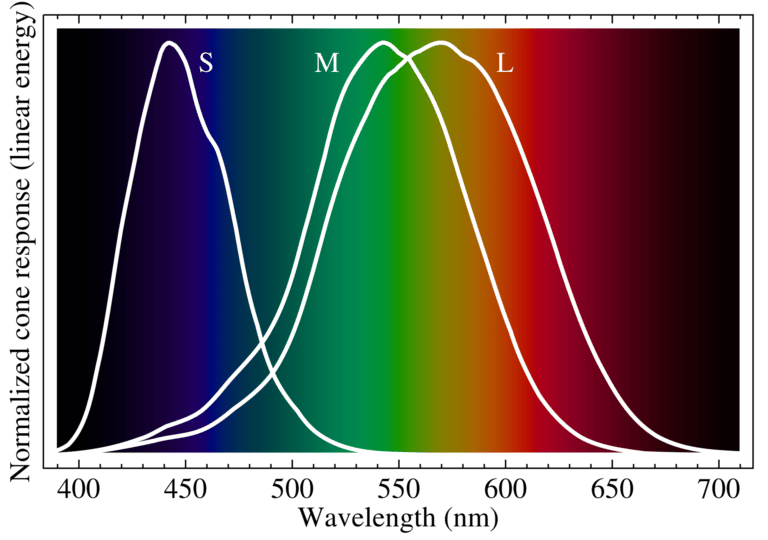
Human Eyes Colour Sensitivity
Rod cells in the retina of our eyes give the ability to see light and give us our night vision when light levels are low, but rod cells cannot distinguish colour.
Cones cells, located in the centre of the retina (in an area called the macula), are not much good at night, but do let us perceive colour during daylight conditions. Cones are sensitive over a wide range of wavelengths, but our eyes are most sensitive to wavelengths near 555 nm – in the green region.
All the other colours that we see result from the stimulation of combinations of red, green, and blue cone cells. There is no cone cell for yellow – it is due to green and red cones working together.
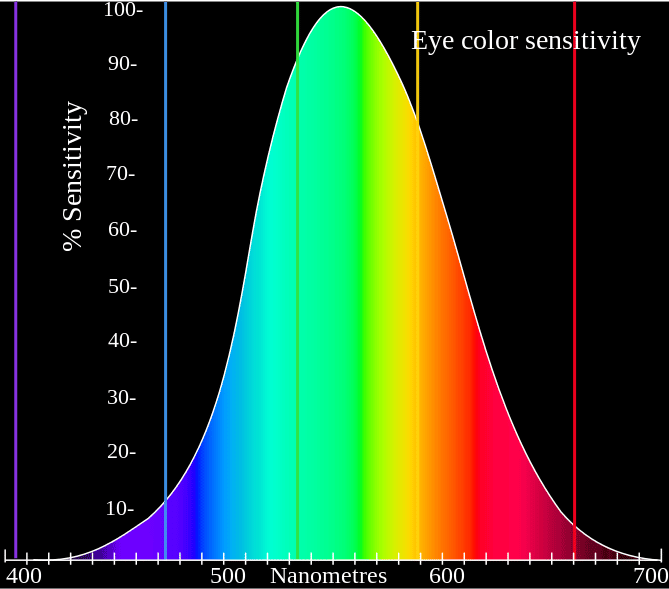
Illustrated below is what we should expect to see – based on our having three cone cells?

Rod cells have their peak sensitivity at 498 nm, roughly halfway between the peak sensitivities of the blue and green cones.
The retina is multi-layered, and the signals end up at the ganglion cells and it is the differences (colour opponency) between the signals from the cone cells that is significant and contains the important information that is taken to the brain! In the retina we have rods and cones in the outer layer, they wire up to the inner nuclear layer consisting of two different types of cells called bipolar cells and horizontal cells, and they wire to each other, but also to the different types of ganglion cells of which there are currently 37 recognised types.
